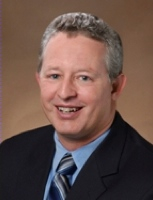Co-Located Conference AgendasExtracellular Vesicles 2023: Drug Delivery, Biologics & Therapeutics | Extracellular Vesicles 2023: Technologies, Biomarker Cargo & Diagnostics | Microphysiological Systems 2023: A Deep Dive into Technologies & Applications | Space Summit 2023: Chips in Space | 

Wednesday, 26 July 202308:00 | Conference Registration and Materials Pick-Up + Coffee | |
Session Title: Where Does the Field of EVs Stand, circa 2023? |
| | 09:00 |  | Conference Chair Welcome and Introduction by Conference Co-Chairperson
Mei He, Associate Professor, University of Florida, United States of America
|
| 09:05 |  | Conference Chair Welcome and Introduction by Conference Co-Chairperson
Michael Graner, Professor, Dept of Neurosurgery, University of Colorado Anschutz School of Medicine, United States of America
|
| 09:15 |  | Keynote Presentation Extracellular Vesicle Integrins: Novel Opportunities for the Diagnosis and Therapy of Cancer
Lucia Languino, Professor of Cancer Biology, Thomas Jefferson University, United States of America
The benefits of cancer therapy mediated by small extracellular vesicles (sEVs) are: low immunogenicity, ability to infiltrate biological barriers and ‘targetability’. Cancer cells cross-talk with the tumor microenvironment by releasing sEVs. Our studies have revealed a role for integrins in sEVs in mediating cancer cell cross-talk with the tumor microenvironment. After confirming the fidelity of the sEV preparations by electron microscopy, density gradient, and immunoblotting, we have determined that integrins are actively packaged into sEVs isolated from cancer cells. sEVs mediate protein transfer of integrins to microvascular endothelial cells and increase the number of their junctions and tubules. We have also demonstrated a cross-talk between prostate cancer cells and monocytes that affects macrophage functions and have suggested that inhibition of integrins might offer a novel immune–based therapeutic strategy in prostate cancer. Overall, these studies show that sEVs from cancer cells may contribute to a horizontal propagation of integrin-associated phenotypes from cancer cells to the tumor microenvironment. We finally demonstrate that the sEVs circulating in plasma from prostate cancer patients contain higher levels of specific integrins, as compared to plasma sEVs from age-matched healthy subjects. Our results suggest that specific integrins in cancer patient sEVs could be clinically useful as non-invasive biomarkers for cancer progression. |
| 09:45 |  | Keynote Presentation Plasma Extracellular Vesicles for Cardiovascular Disease
Dominique PV de Kleijn, Professor Experimental Vascular Surgery, Professor Netherlands Heart Institute, University Medical Center Utrecht, The Netherlands, Netherlands
Cardiovascular Disease (CVD) is with the cardiovascular events of Ischemic Heart Disease and Stroke, the number 1 and 2 cause of death in the world and expect to increase especially in Asia. We use plasma extracellular vesicle (EV) protein content of vesicles from plasma subfractions on plasma of stroke and periferal artery disease(PAD) patients, patients after carotid atherectomy (CEA) and patients suspected for chronic coronary syndrome (CCS). Using 25 ul of plasma, we developed an automated 96-well based protocol using sequential precipitation. Using samples of the AtheroExpress, the largest ongoing CEA biobank we try to early detect the risk of a second Major Adverse Cardiovascular Event (MACE: myocardial infarction, stroke or cardiovascular death) in PAD and CEA patients. Identification of such high risk patients is very important for possible (expensive) add-on pharmaceutical therapy or the decision to operate or not. Sequential procipitation for EV isolation is also used for the diagnosis of CCS. |
| 10:15 |  | Keynote Presentation Low Earth Orbit Research Opportunities on the International Space Station
Kristin Kopperud, Science Program Director, Biological Sciences, International Space Station National Laboratory, United States of America
Overview of the ISS National Laboratory, including its mission, role, and unique set of experimental conditions. I will also discuss some research opportunities, from past to upcoming, that are available to researchers desiring to conduct experiments in microgravity. |
| 10:45 | Mid-Morning Coffee Break and Networking in the Exhibit Hall | 11:15 |  Sourcing of Extracellular Vesicles for Targeted Drug Delivery and Therapeutics Development Sourcing of Extracellular Vesicles for Targeted Drug Delivery and Therapeutics Development
Nasser Nassiri Koopaei, CEO, EriVan Bio
Extracellular Vesicles have different properties depending on their source and production procedures with regards to targeted delivery applications in terms of their surface markers and cargo components. These variables need to be taken into account when deciding on the USP and DSP early on during the lead optimization in therapeutics.
| 11:45 | Effect of Plasma Exosome Isolation Methods on Multi-Omic Profiles in Cancer Patients and Healthy Controls
Liang Wang, Senior Member of Tumor Biology, Moffitt Cancer Center, United States of America
Circulating exosomes in the blood are promising tools for biomarker discovery in cancer. Due to their heterogeneity, different isolation methods may enrich distinct exosome cargos generating different omic profiles. In this presentation, I will share our recent study on the effects of plasma exosome isolation methods on multi-omic profiles in cancer patients and healthy controls. This study evaluated three exosome isolation methods including size exclusion chromatography, lectin binding, and TIM4 binding. For each exosome isolation method, molecular profiling analysis was performed included lipidome, metabolome, proteome and transcriptome. Our study shows clear difference in molecular profiles of the exosomes isolated using different methods. Our findings suggest that specific isolation methods select subpopulations which may significantly impact cancer biomarker discovery. | 12:15 | Networking Lunch - Network with Colleagues and Meet Exhibitors | |
Session Title: Technologies Driving EV Research Forward |
| | 13:00 |  | Keynote Presentation NanoFACs EV Sorting -- Strengths and Limitations
Terry Morgan, Professor of Pathology and Laboratory Medicine, Oregon Health and Science University, United States of America
|
| 13:30 |  Nano Analyzer: Combining Flow Cytometry and Particle Analysis for Comprehensive Characterization of Nanoparticles Nano Analyzer: Combining Flow Cytometry and Particle Analysis for Comprehensive Characterization of Nanoparticles
Suren Dhadi, Applications Scientist, NanoFCM
Nanofcm’s Nano Analyzer combines the abilities of nanoparticle analysis with single-particle accuracy of flow cytometry. The ultra-high sensitive nano analyzer equipped with dual lasers coupled with dual fluorescent detectors possess the capabilities to capture particle size, concentration, phenotypic measurements, biochemical characterization and encapsulation studies with impeccable accuracy. Nanofcm’s QC beads (Fluorescent Silica nano beads) and silica nanospheres (sizing beads) calibrate the nano analyzer to GMP standards and can capture high throughput multi parametric (Physical and biochemical) sample data from Nano particles in just three minutes per sample. Nano analyzer is ideal for studying exosome/EV based liquid biopsies using direct precleared biofluids. Nano analyzer is routinely employed for Nano medicine, EV, LNP and Viral based therapeutics and diagnostic development, drug loading, empty vs full characterization etc.
| 14:00 |  Improvements in Fluorescence Nanoparticle Tracking Analysis Improvements in Fluorescence Nanoparticle Tracking Analysis
Sven Rudolf Kreutel, Chief Executive Officer, Particle Metrix GmbH and CEO, Particle Metrix Inc., USA
| 14:30 |  EV Quantification and Cargo Analysis with Spectradyne’s ARC™ Particle Analyzer EV Quantification and Cargo Analysis with Spectradyne’s ARC™ Particle Analyzer
Jean-Luc Fraikin, CEO, Spectradyne
Spectradyne’s ARC particle analyzer uses a unique combination of electrical and optical measurement techniques to accurately measure the size, concentration, and cargo of EVs as small as 50 nm in diameter. Examples of EV subpopulation analysis and cargo quantification will be presented, including measurements of a new standard material expressing both endogenous GFP and tetraspanin surface markers.
| 15:00 |  Extracellular Vesicle Detection and Calibration on the Cytek® Amnis® CellStream® and Cytek® Amnis® ImageStream® Systems Extracellular Vesicle Detection and Calibration on the Cytek® Amnis® CellStream® and Cytek® Amnis® ImageStream® Systems
Robert Thacker, Imaging Sales and Applications Specialist, Cytek Biosciences
The quantification and characterization of extracellular vesicles is challenging due to their size. High magnification microscopy can analyze EVs, but has very low throughput. Flow cytometry is currently the only method building in rigor and reproducibility for single EV measurements, but older PMT-based flow cytometers have limitations in detecting EVS due to low sensitivity, cutting out the smallest of particles. Flow cytometry systems that use a charge coupled device (CCD)-camera have greatly enhanced sensitivity and increase the limit of detection. Today’s presentation will focus on two such CCD based systems – the Cytek® Amnis® CellStream® and Cytek® Amnis® ImageStream® - and share results from studies demonstrating the low limit of detection and the importance of calibration for more accurate sizing standardization of protocols within the field.
| 15:30 |  | Keynote Presentation Extracellular Vesicles as Novel Tools in Precision Medicine: Origins, Properties, and Molecular Cargo as Diagnostic and Prognostic Cancer Biomarkers
Andrew Godwin, Professor and Division Director, Genomic Diagnostics, Founding Director, Kansas Institute for Precision Medicine, Deputy Director, KU Cancer Center, University of Kansas Medical Center, United States of America
Biomarkers are measurable biological indicators with numerous clinical applications each providing unique information about an individual's health status. The identification and development of new biomarkers is helping to advance the field of precision medicine. Biomarkers, including proteins, autoantibodies, RNA/DNA, metabolites, lipids, etc., continue to impact personalized health care, given each person’s disease has a unique pattern of biomarkers. In oncology, pathologic analysis of tumor tissue biopsies remains the gold standard for the initial diagnosis of cancer. However, liquid biopsies, which analyze tumor-derived material circulating in the bloodstream and other bodily fluids, are rapidly gaining traction in the clinic. These tests offer considerable potential in oncology, which include early detection, monitoring treatment response, and disease recurrence. Recently liquid biopsy-based biomarkers include circulating tumor cells, cell-free DNA/RNA, nanoparticles, and extracellular vesicles (EVs). Regarding the latter, EVs are showing great promise as circulating biomarkers. The International Society for Extracellular Vesicles define EVs as particles naturally released from the cell that are delimited by “a lipid bilayer and cannot replicate”. Center among EVs are nano-sized vesicles (40 to 150 nm) of endocytic origin also known as small EVs/exosomes, which are produced and released by most cell types under normal physiologic and in diseased states. sEVs carry cargo representative of their originating cell including nucleic acids, cytokines, membrane-bound receptors, and a wide assortment of other, biologically active lipids and proteins. Since sEVs/exosomes travel systemically throughout the body, efforts are underway to exploit them as potential biomarkers to detect and monitor disease states. Ways to isolate sEVs and characterize their cargo for cancer diagnostics and for monitoring early response to therapy will be discussed. |
| 16:00 |  | Keynote Presentation Cross Talk Between Viruses and EV Biogenesis
Fatah Kashanchi, Professor and Director of Research, Lab of Molecular Virology, George Mason University, United States of America
Most RNA and DNA viruses package and release their products (DNA, RNA, proteins) in EVs to avoid detection by the host immune system. In the current study we have addressed two main questions related to timing of the EV vs. virus release using HIV-1 as a model system, and have further found a new method of isolating viral populations that have never been described before. To date, it is not clear whether there is a timing difference between EV and virion release from infected cells. Here, we found that EVs precede the secretion of viral particles at 6 hrs post-transcriptional activation and release. This early EV release could shed light on how the contents of EVs are able to increase the susceptibility of viral infection, perhaps by priming the environment prior to viral egress or altering the progression of the cell cycle in recipient cells. We also have found that when separating EVs using differential ultracentrifugation, size exclusion chromatography or simple size filtration, there are at least three distinct sizes and functional viruses when using HIV-1 as a model system. Validation of the data was performed utilizing blocking infectivity with broadly neutralizing antibodies or culturing the producer cell lines in the presence of anti-retroviral drugs to interfere with the production of infectious virions. Collectively, our results show how viruses use EV pathways to release their cargo prior to virion release and the virions are very heterogenous in size, biochemical and biophysical characteristics. |
| 16:30 | Extracellular Vesicles-Enabled Liquid Biopsy for Cancer Diagnosis, Prognosis, and Treatment
Yong Zeng, Associate Professor, Department of Chemistry, University of Florida, United States of America
My research is primarily focused on the development of innovative liquid biopsy-based tests based on extracellular vesicles (EVs) and micro/nanobiosensing technologies for cancer diagnosis, prognosis, and treatment. Herein, we will discuss the nanoengineered systems and bioassays for efficient immunoisolation of circulating EVs and ultrasensitive profiling of EV biomarkers, including proteins and miRNAs. Adaptation of our new technologies to clinical assessment of EV-based liquid biopsy for non-invasive detection, subtyping, and treatment monitoring of cancer will be demonstrated. | 17:00 | The AlphaV-Beta3 Integrin/NgR2 Complex is Up-regulated in Prostate Cancer Cell-derived EVs and Patient-derived EVs and Represents a Promising Therapeutic Target
Anna Testa, Medical Resident, Thomas Jefferson University; Internal Medicine Fellow, University of Tur, United States of America
The AlphaV-Beta3 integrin, known to promote growth and metastasis of several types of cancer, is highly expressed in neuroendocrine prostate cancer (NEPrCa). PrCa cell-derived small extracellular vesicles (sEVs) expressing AlphaV-Beta3 contribute to NEPrCa differentiation in recipient cells. AlphaV-Beta3 integrin upregulates NgR2, a glycosylphosphatidylinositol-anchored receptor, in NEPrCa cells. By investigating the impact of AlphaV-Beta3 expression in sEVs on downstream protein expression via proteomic analysis, we demonstrate that AlphaV-Beta3+ sEVs also show an up-regulation in NgR2 expression; furthermore, a down-regulation of typical effectors involved in apoptosis and necrosis and an up-regulation of tumor cell survival factors emerge, as compared to control sEVs. We also show that EVs isolated from metastatic castrate-resistant prostate cancer (mCRPC) patients plasma are enriched in AlphaV-Beta3 and NgR2. sEVs used in these experiments were isolated by density gradient and characterized by nanoparticle tracking analysis and immunoblotting. Additionally, by testing the effect of AlphaV-Beta3 inhibition in NEPrCa-patient derived xenografts (PDXs) using LM609, a monoclonal antibody (mAb) specific for AlphaV-Beta3, we demonstrate a significant reduction of tumor volume and weight in NE-PDXs carrying mice upon treatment with LM609. Our findings suggest that AlphaV-Beta3 integrin and NgR2 are key components of NEPrCa progression and represent a promising therapeutic target both in vitro and in vivo. | 17:15 | Networking with Beer and Wine | 18:30 | Evening Panel Discussion: How Can Life Sciences Researchers Access Resources On-board the International Space Station and Send Experiments to Run on Station?
This Panel Discussion Brings Together the Conference Tracks Together for Discussions and Learning from the Team Onsite from the International Space Station National Laboratory.
Panelists:
Dr. Mike Roberts CSO, International Space Station National Laboratory
Dr. Kirstin Kopperud Program Director, Biomedicine International Space Station National Laboratory
Professor Dr. Terry Morgan Oregon Health and Sciences University (OHSU)
Professor Yong Zeng University of Florida
Professor Siobhan Malany University of Florida and Founder, Micro-gRx, Inc.
| |
Evening Satellite Session: Late-Breaking Topics to Cover in the EV Field |
| | 19:30 | Next-Generation Nanoplasmonic Sensing Technologies for Multiplexed Single Extracellular Vesicle Analysis
Hyungsoon Im, Associate Professor, Center for Systems Biology, Mass General Hospital (MGH)/Harvard Medical School, United States of America
Recent studies support single extracellular vesicle (EV) analysis technologies as the most promising option for early cancer detection and accurate quantification of tumor-derived EVs for longitudinal treatment monitoring. In this presentation, I will discuss our advanced nanoplasmonic EV analysis technologies for sensitive, robust, and multiplexed single EV analysis. | 20:00 |  | Keynote Presentation Astrocytes at the Crossroads of HIV and Alzheimer’s Disease
Shilpa Buch, Professor and Senior Executive Vice Chair for Research, University of Nebraska Medical Center, United States of America
Increased life expectancy of HIV+ patients in the post anti-retroviral therapy era parallels with increased incidence of HIV-associated neurological disorders (HAND) and associated comorbidities such as Alzheimer’s Disease (AD). The persistence of HAND is thought to involve poor penetration of the antiretroviral drugs across the BBB into the CNS, leading to persistent low-level viral replication in the CNS with accumulation of cytotoxic viral proteins including Tat. Interestingly, there have been reports on Tat-mediated production of the toxic neuronal amyloid protein & the interaction with the former, leading to enhanced toxicity. Additionally, opiates have shown to exaggerate HIV mediated neuropathogenesis in different animal models. Abundant glial cells such as the astrocytes have also garnered interest as potential contributors of amyloidosis, & this could translate into a significant added burden to the process of amyloidosis in the context of Tat & Opiates. Present study was aimed at assessing the role of astrocytes in mediating Tat/Morphine induced amyloidosis in the context of HAND & opiate use disorder. Our in vivo data showed that SIV+ macaques/HIV+ patients, exhibited region specific up-regulation of the amyloidogenic components in the brain that co-localized with GFAP positive astrocytes. In vitro findings aimed at dissecting the cell-type specificity involved in amyloidosis revealed up-regulation of AD markers – BACE-1, amyloid precursor protein (APP), ABetamoC64, p-Tau, as well as increased activity of BACE-1 in Tat-exposed human primary astrocytes (HPA). Molecular mechanism(s) underlying this process involved up-regulation of hypoxia inducible factor (HIF-1a) with a concomitant translocation to the nucleus & binding to the lncRNA BACE-1AS resulting in formation of a unique complex as confirmed by RIP and EMSA. Further, ChiP assay showed functional binding of the complex to BACE-1 promoter leading in turn, to increased expression of BACE-1 by transcriptional, post transcriptional and translational mechanisms along with increased activity leading to consequential generation of ABeta-42 protein via cleavage of APP. We next sought to assess whether morphine-stimulated astrocyte extracellular vesicles (ADEV) could shuttle the amyloid cargoes to neurons. Our results showed that morphine exposure up-regulated the release of morphine-ADEVs, carrying amyloids and that silencing HIF-1Alpha in astrocytes not only reduced the numbers of released ADEVs, but also inhibited the packaging of amyloid cargos in ADEVs. These findings were further validated in brain derived EVs (BEVs) isolated from macaques, wherein it was shown that BEVs from morphine-dependent macaques, carried varieties of amyloid cargoes including the cytokine IL-1Beta. Targeting HIF-1Alpha can thus be considered as an adjunctive therapy approach for HAND patients on cART with a comorbidity of opiate misuse. |
| 20:30 | Exosome Mimicry in Virus Infection: The Hepatitis A Virus Model
Gerardo Kaplan, Principal Investigator, FDA, United States of America
Hepatitis A virus (HAV), a small positive-strand RNA non-enveloped virus, uses the exosome secretory machinery to exit the cell. Although HAV is mainly transmitted through the fecal-oral route by naked particles, infectious exosomes (exo-HAV) carrying HAV particles, free genomes, or both are found in blood. We showed that exo-HAV uses the HAVCR1/NPC1 pathway of exosome mimicry to infect cells, and that the cargo of free HAV genomes but not naked particles are mainly responsible for infectivity. We also showed that cargo loading into exo-HAV during infection is a dynamic process resulting in exosomes lacking naked HAV particles. Further research on the HAV exosome mimicry model will help unravel poorly understood exosome cargo-delivery pathways, develop therapeutics to prevent and treat HAV infection, and harness HAV biology to produce exosome-based drugs. | 21:00 | Close of Day 1 Conference Programming |
Thursday, 27 July 2023 |
Please View Details of Programming under the EV Therapeutics Website |
| |
|


 Add to Calendar ▼2023-07-26 00:00:002023-07-27 00:00:00Europe/LondonExtracellular Vesicles 2023: Technologies, Biomarker Cargo and DiagnosticsExtracellular Vesicles 2023: Technologies, Biomarker Cargo and Diagnostics in Orlando, FloridaOrlando, FloridaSELECTBIOenquiries@selectbiosciences.com
Add to Calendar ▼2023-07-26 00:00:002023-07-27 00:00:00Europe/LondonExtracellular Vesicles 2023: Technologies, Biomarker Cargo and DiagnosticsExtracellular Vesicles 2023: Technologies, Biomarker Cargo and Diagnostics in Orlando, FloridaOrlando, FloridaSELECTBIOenquiries@selectbiosciences.com